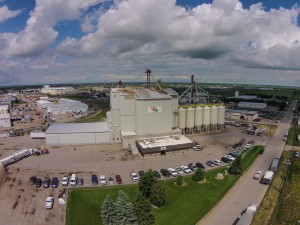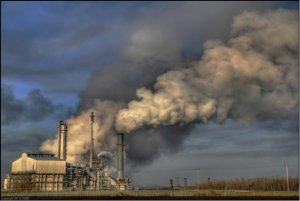
Air pollution emissions from Canada’s Animal Food Manufacturing industry have increased 92 per cent since 2011 according to Environment and Climate Change Canada’s Reported Pollution Data.
In 2014, Environment and Climate Change Canada reported that 38 facilities were producing 1,917 tonnes of air emissions, a jump from the 2011 reports that record just 996 tonnes of air pollution across 36 facilities, almost a quarter of which are found in Alberta.
An almost doubling in emissions signifies a boom in the industry, which serves North American livestock and agriculture markets.
The major pollutant is particulate matter, the form of air pollution most associated with health risks.
“Fine particulate matter is a real mix of different components,” said Kim Perotta, the Executive Director of CAPE, the Canadian Association of Physician’s for the Environment.
She added that particulate matter is linked to “increases in rates of heart disease, acute health impacts around lung disease, and increased in rates of lung cancer.”
The issue of particulate matter emissions are evident to Holly Nicoll, Director of Marketing at Hi Pro Feeds, an Alberta based animal food manufacturer.
Up until last year, the Hi Pro mill in Olds, Alberta was producing a significant amount of particulate matter pollution, in this case dust. But in 2015 improvements were made.
“I’d be there for the day and I’d get in my car and there would be grain dust on my windshield,” said Nicoll.
In 2014 alone, the Olds location released 292 tonnes of particulate matter into the air, according to Environment and Climate Change Canada. The emissions were primarily releases from pressurized equipment.
“We went about doing some upgrades, putting in filters and screens to reduce any dust coming out of the mill,” said Nicoll.
“Now I can go there and there’s no such thing.”
Air pollution and emissions targets are handled on the provincial level, and legislation has shown clear improvements, said Perotta.
In September of 2015, Alberta Environment Minister Shannon Phillips said the province is on track to have the worst air quality in Canada unless immediate action is taken. Phillips plan has focused primarily on the oil industry and coal-fired power plants in the province.
“The time to act is long overdue,” she said at a press conference.
It’s something Nicoll and Hi Pro has recognized.

“It’s all part of the equation in terms of being responsible in the industry,” she said.
But the business has grown, and expansion is positive for the economy and for efficiency.
“We want to be as efficient as possible and in doing that I think the efficiencies that we’re creating in the business are actually helping in terms of emissions,” she said.
But environmental sustainability is one issue, and there are many priorities the industry has to manage.
“The biggest challenge that we’re facing right now is government regulations, and more importantly food safety,” said Nicoll.
Perotta says that government regulations make a difference, and when it comes to controlling pollution and air emissions those regulations are a powerful tool.
She attributes much of the improvement seen today in provinces like Ontario to legislation action.
“We have seen a response to changes in regulations that have required changes in technology, and have resulted in improvements in air quality,” she says.
But until those same kinds of regulations are established in Alberta, what it comes down to is efficiency.
“The industry is expanding,” she says. “We’ve got to feed the world.”
